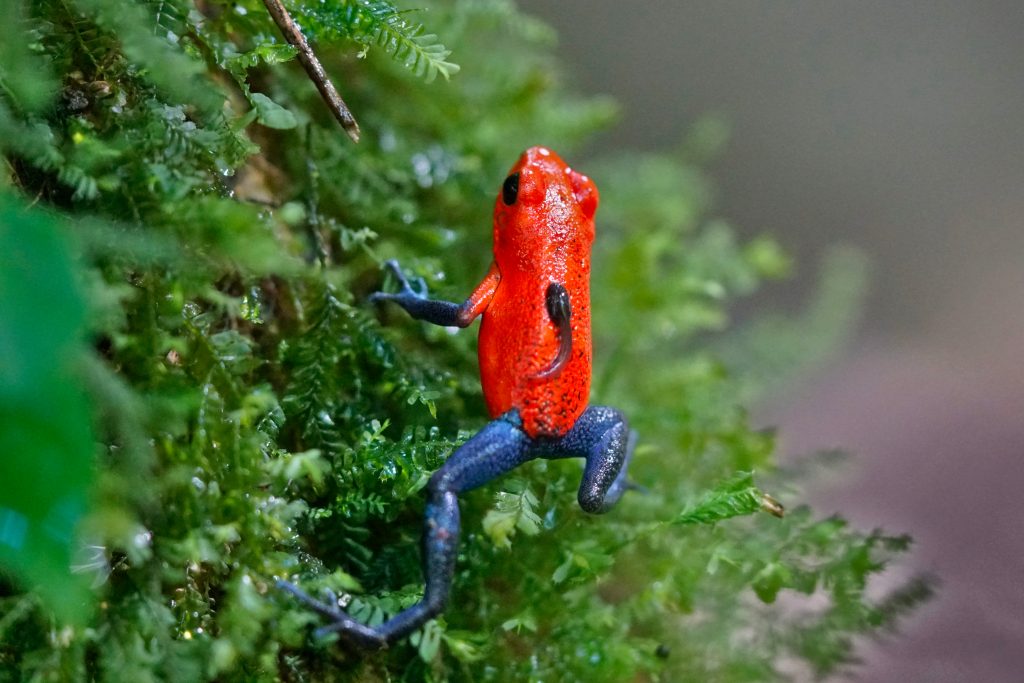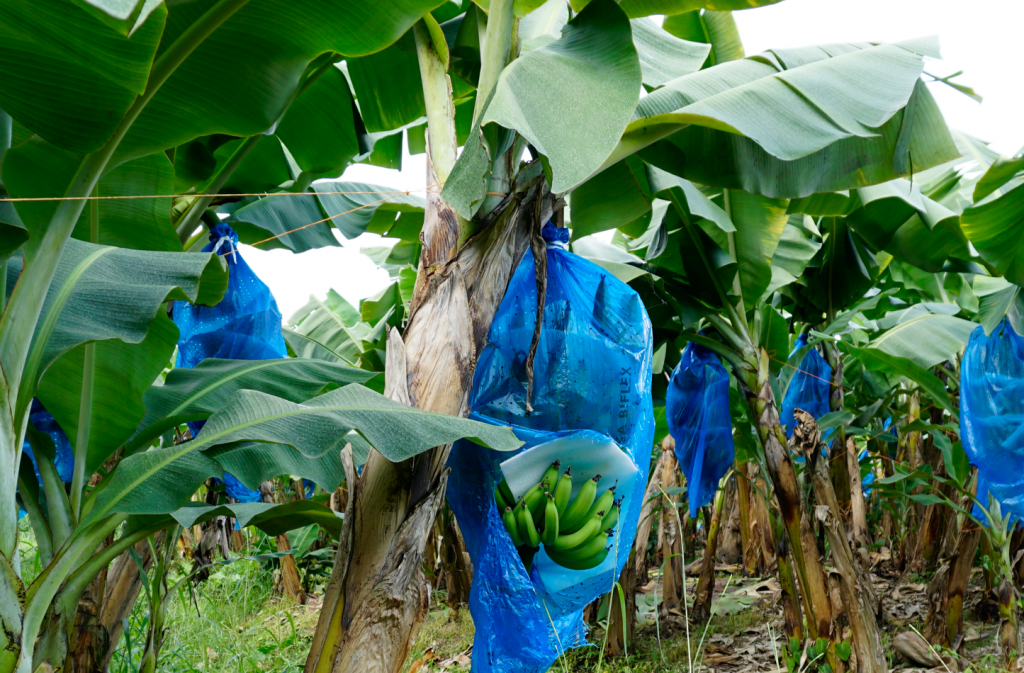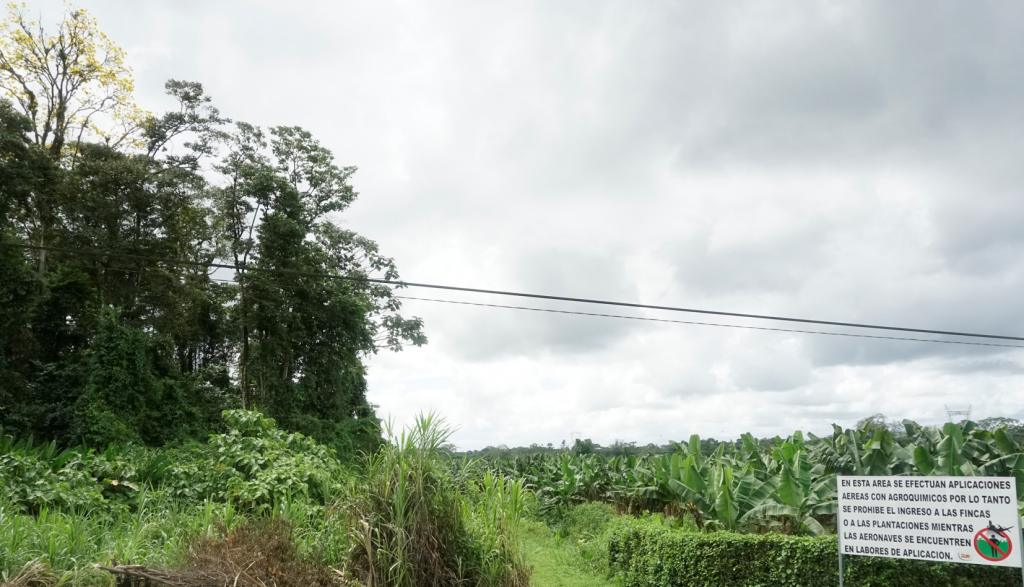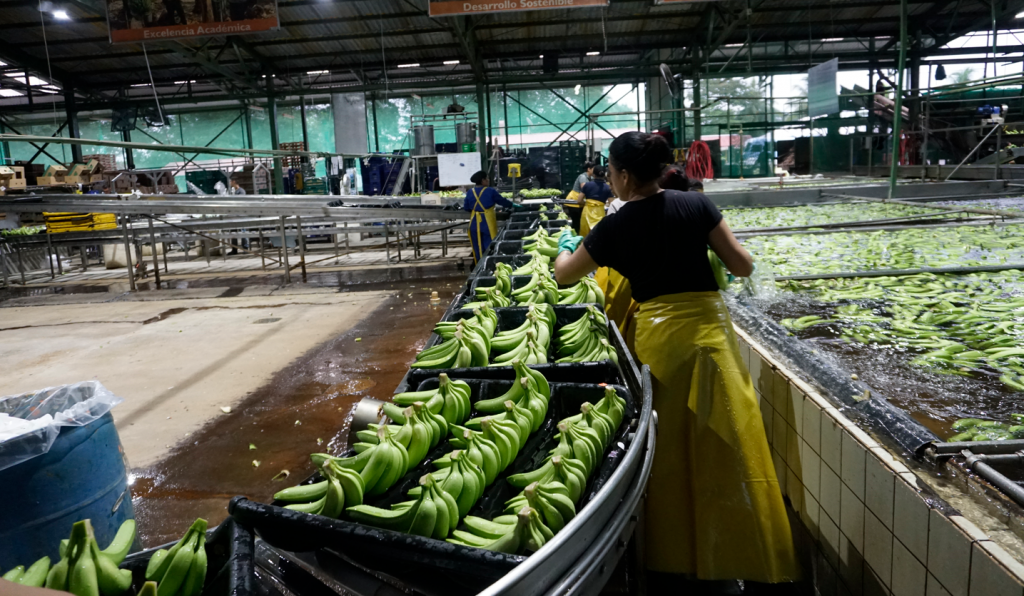In this blog post, Carsten Brühl is explaining the background and findings of a review produced together with colleagues of the Central American Institute for Studies on Toxic Substances (IRET) at Universidad Nacional (UNA), in Costa Rica that focusses on pesticide use in banana plantations and addresses exposure and effects in environment and human health. The review is the result of a DFG – Conare collaboration funding.
Background
Biodiversity, the variety of life on Earth, is facing a significant decline worldwide. Tropical ecosystems, home to the majority of the planet’s biodiversity, are particularly vulnerable. One major contributing factor to this decline is the widespread use of agricultural monocrop systems, which not only replace original habitats but also heavily rely on synthetic pesticides. In this review, we focus on the extensive banana production in Costa Rica to exemplify the detrimental effects of pesticides on ecosystems and human health.

Pesticide Exposure
Banana production in Costa Rica has a long history of pesticide use, spanning over a century. The reliance on synthetic pesticides for more than fifty years has had profound consequences. Studies have shown that pesticide exposure is particularly high and well-documented in aquatic systems and humans. However, limited data are available for the terrestrial compartment, including adjacent non-target ecosystems like rainforest fragments.

Ecological Impacts
Research has demonstrated the adverse effects of pesticides on various aquatic species and processes, revealing negative impacts at the organismic level. However, studies examining the effects at the population and community levels are scarce. This knowledge gap hampers our ability to fully comprehend the overall ecological consequences of pesticide use in tropical ecosystems.
Human Health Concerns
The evaluation of pesticide exposure is critical for understanding the risks to human health. Studies have linked pesticide exposure, particularly in children, to various types of cancer and neurobiological dysfunctions.
Risk Assessment and Limitations
Although research has primarily focused on insecticides, which pose the highest risks to aquatic systems, it is crucial to broaden our attention to include fungicides. Fungicides are commonly applied aerially over larger areas in banana production and should not be overlooked in risk assessments. Existing risk assessment and regulation of pesticides predominantly rely on temperate models and test species, potentially underestimating the true risks associated with pesticide use in tropical ecosystems. This knowledge gap calls for the development of research approaches specifically tailored to tropical regions and crops like bananas. Enhanced risk assessment strategies will enable more accurate evaluations of the ecological and human health impacts.
Towards Reducing Pesticide Use
To mitigate the negative impacts of pesticide use, it is essential to explore alternative strategies that reduce reliance on hazardous substances. By implementing sustainable farming practices, promoting integrated pest management, and adopting organic farming methods, we can minimize pesticide use while maintaining crop productivity. These approaches will not only safeguard biodiversity but also protect the health and well-being of local communities.
Conclusion
The decline of global biodiversity, particularly in tropical ecosystems, is a pressing issue. Through the case study of banana production in Costa Rica, we have highlighted the significant impacts of pesticide use on aquatic and terrestrial environments, as well as human health. To better understand and address these risks, it is imperative to conduct further research focused on tropical ecosystems, specifically examining the effects at the population and community levels. Moreover, risk assessment strategies should be tailored to the unique characteristics of tropical regions, and efforts should be made to reduce pesticide use by adopting sustainable and organic farming practices. By prioritizing biodiversity conservation and human well-being, we can create a more sustainable and resilient future for our planet.
The review Pesticide use in banana plantations in Costa Rica–a review of environmental and human exposure, effects and potential risks, by Carsten A. Brühl, Maria A. Andres, Silvia Echeverría-Sáenz, Mirco Bundschuh, Anja Knäbel, Freylan Mena, Lara L. Petschick, Clemens Ruepert and Sebastian Stehle (2023) appeared in Environment International and can be read here: Pesticide use in banana plantations in Costa Rica – A review of environmental and human exposure, effects and potential risks – ScienceDirect.
See also: Tropical Ecotoxicology and Exchange with Costa Rica – EcotoxBlog (uni-landau.de)



